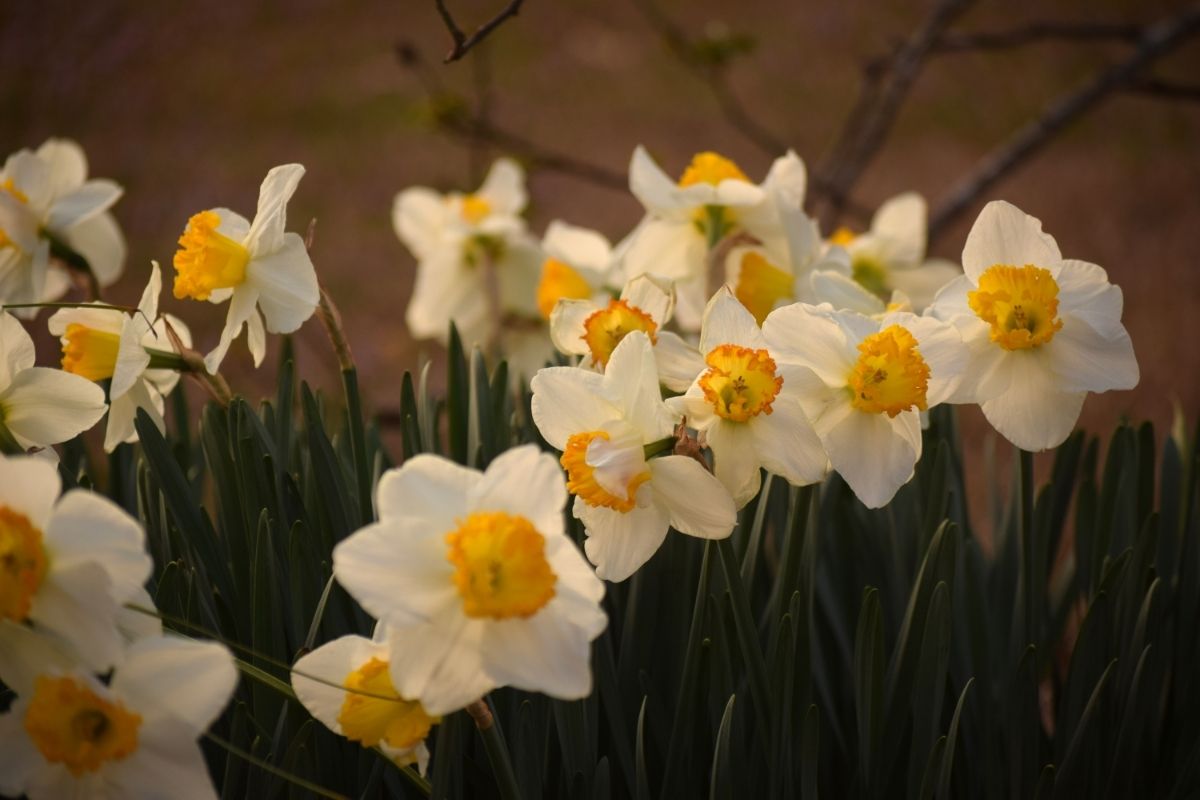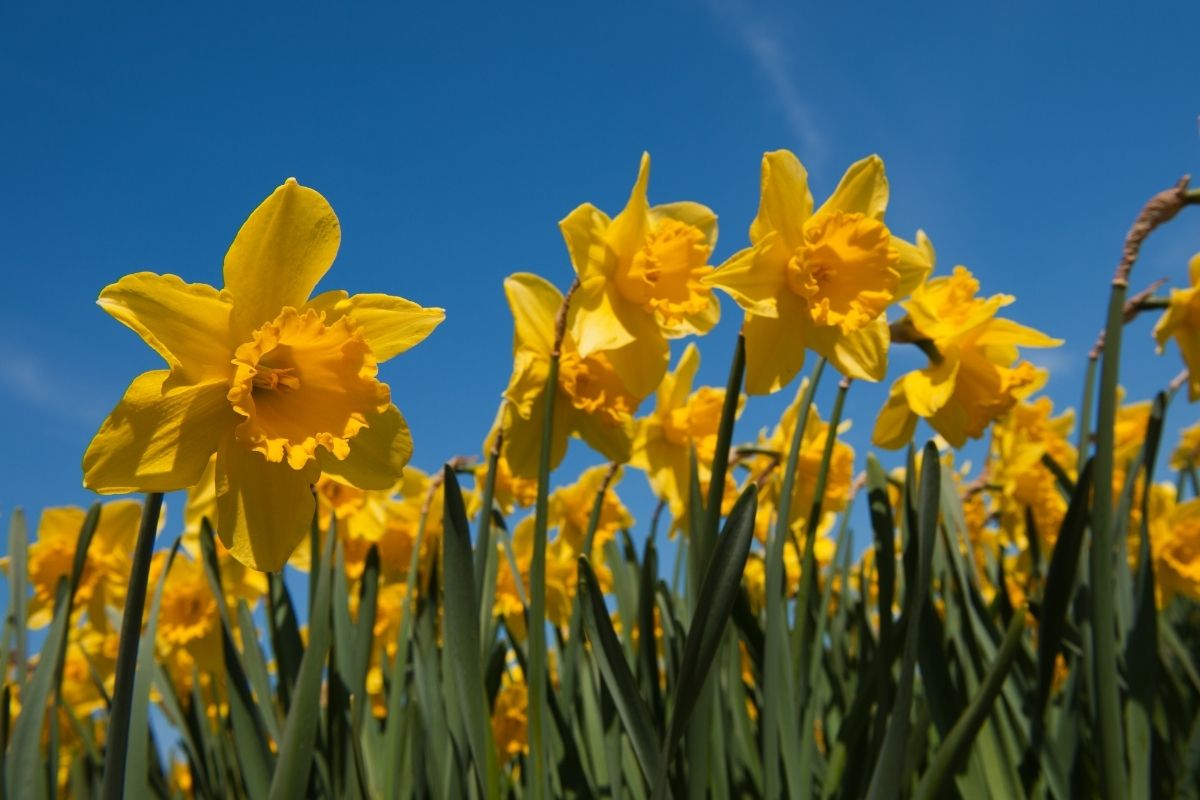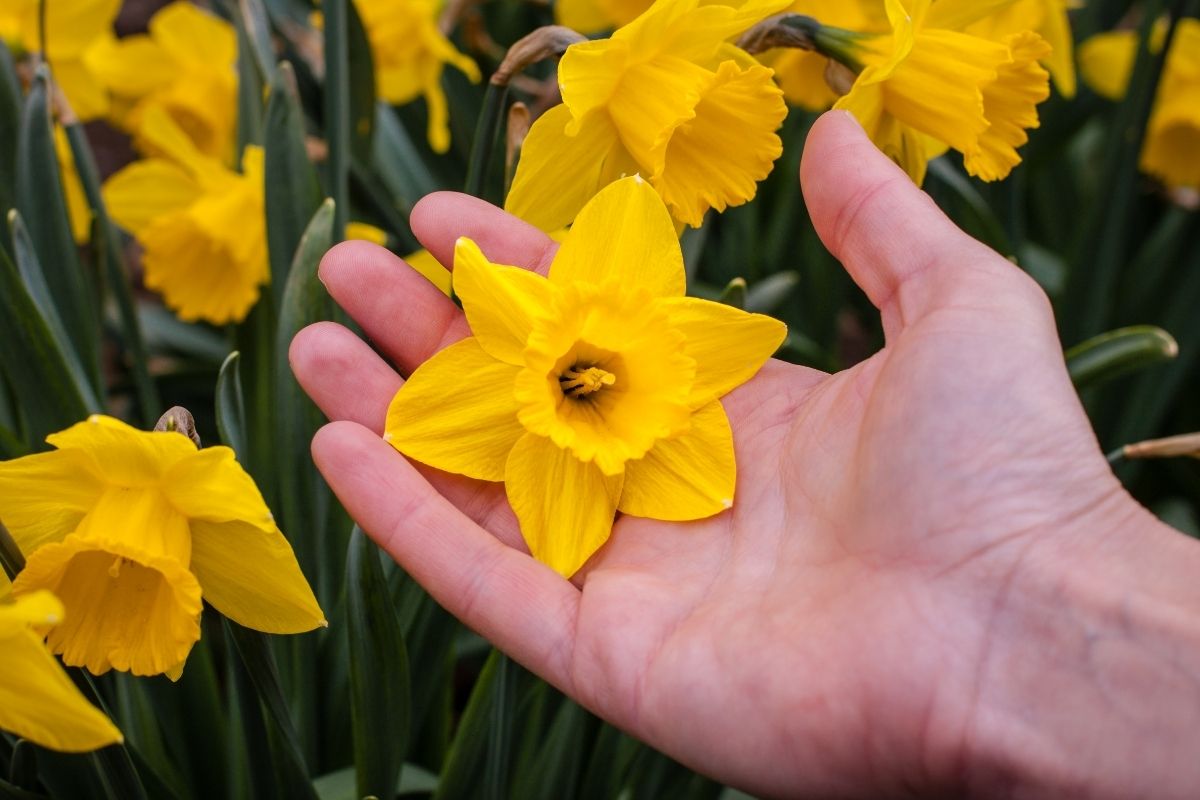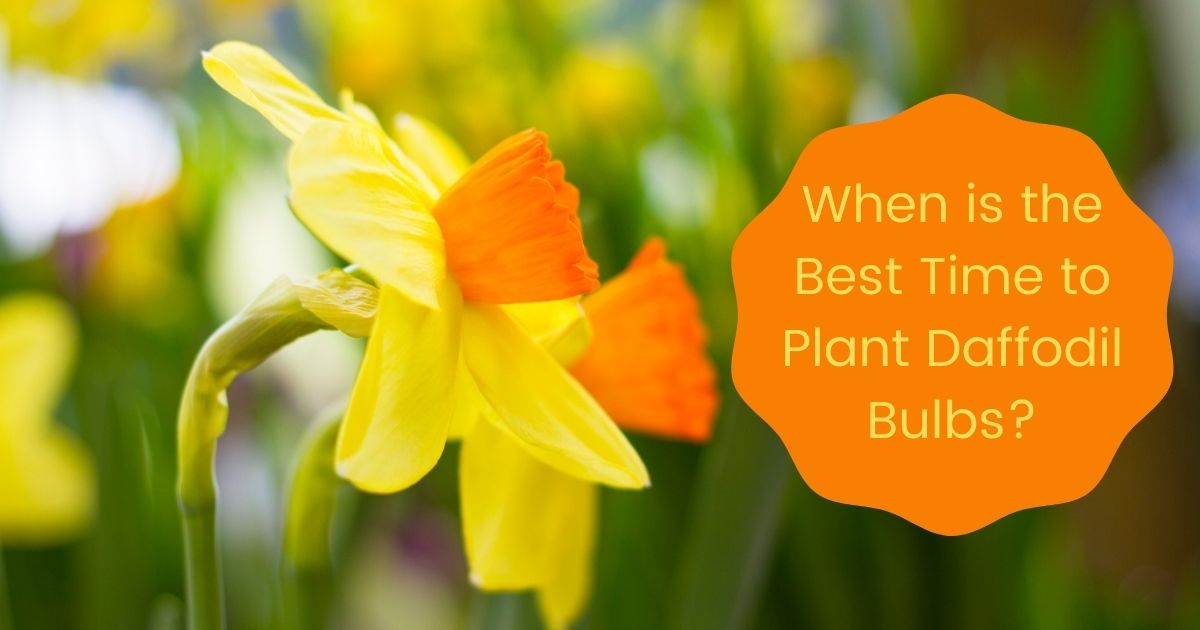What is a Daffodil?
Daffodils are one of the first flowers to bloom in the spring, but when is the best time to plant daffodil bulbs? This article will discuss how to plant daffodil bulbs and plant them. Read on to find out more about daffodil flowers.
When is the Best Time to Plant Daffodil Bulbs?
Daffodil bulbs are planted in the fall when the weather begins to cool and before the first hard freeze. Therefore, daffodil bulbs can be planted in the northern regions from late September to October, while in the Southern areas from October to November. When it comes to planting daffodils in the fall, a good rule of thumb is to let soil temperature be your guide.

How to Plant Daffodil Bulbs
- Choose fresh daffodil bulbs that are not dry. The bigger the bulb, the brighter it will be.
- Plant the bulb with the top or pointy end about two to three times as deep as the bulb is tall. Plant a 2 inches (5 centimeters) bulb at least 4 inches (10.16 centimeters) deep (measured from the bottom of the bulb). In contrast, plant 3 inches (7.62 centimeters) 5 inches (12.7 centimeters) deep.
- Daffodils can tolerate some crowding but prefer to be spaced 3 to 6 inches (7.62 to 15.24 centimeters) apart.
- You may sprinkle a small amount of bulb fertilizer during planting into the hole.
- In areas where winters are harsh, ensure you cover the bulbs by at least 3 inches (7.62 centimeters) of soil.
- Resist the urge to dig up spring-flowering plants like daffodils and tulips. Although you can loosen the mulch, the shoots will still benefit from protection from cold, drying winds in the early spring.
- A daffodil flower contains oxalic acid, a substance that makes them unappealing to most rodent pests. Instead, consider inserting sharp-edged shells or a pelleted rodent deterrent into and around each planting hole if you are bothered.
- When planting, avoid using a solid commercial fertilizer or fresh manure.
- Position the bulb so that the pointy end is facing up. Fill the space with dirt. After planting, thoroughly water the bulbs and cover with a light mulch.
How Deep to Plant Daffodil Bulbs
A daffodil (yellow) flower is a sure sign that spring is on its way. But do you ever wonder how deep to plant daffodil bulbs? When deciding how deep to plant daffodil bulbs, keep in mind that if you don’t plant them deeply enough, they will perform poorly and become “blind,” meaning they will not bloom.
You should plant Daffodil bulbs so that their pointed tops are about 4 to 7 inches (10.16 to 17.78 centimeters) below the soil’s surface or nearly three times the size of the bulb; allow four to five bulbs per square foot (per 0.093 square meters) when planting outdoors.
Are Daffodils Perennials?
So, are daffodils perennials? From the genus Narcissus, Daffodils herald the arrival of spring with their trumpet-shaped flowers in yellow or white that grow from bulbs. They are perennials that will return year after year in the garden if you care for them properly. Daffodils are grown by gardeners in most temperate-climate states in the United States.
The underground bulb’s health is critical to the life of a daffodil. The bulb is a carbohydrate-storing stem. Thin roots grow from the bulb’s base to absorb water and nutrients. In addition, layers of tissues exist within the bulb, including cells that develop into flower buds and leaves.
The bulb lives on year after year. In the winter, cool soil temperatures cause hormones to be released, causing a preliminary flower bud to form. The bud and leaves emerge from the soil during the late winter warmth.
The blossom only lasts one to three weeks, but you can find the leaves until late spring. Then, the foliage performs photosynthesis to replenish the bulb with food, producing side bulbs and blooming the following spring again.
How Long Do Daffodils Bloom?
Depending on where you live and the cultivars you grow, daffodils can bloom from six weeks to six months. You need to allow the daffodil plant to rebuild its bulb for the following year after it has flowered. While this is happening, the leaves remain green. You can cut the leaves off when they start to yellow, but not before.
What to do with Daffodils After Flowering
After flowering, remove daffodil blooms; otherwise, the bulbs will expend a lot of energy to produce seeds. However, only the flower and stem should be removed, not the leaves. After they bloom, this is the most critical aspect of daffodil care.
Why do we allow the unsightly foliage to remain? Simply put, the leaves absorb sunlight energy and convert it into chemicals that produce sugar — the food that keeps bulbs blooming year after year — through the process of photosynthesis. Don’t remove the foliage too soon so that the bulbs don’t stunt, resulting in smaller and fewer blooms the following year.
This explains why you should plant daffodils in full sun. If your daffodils are planted in partial or complete shade and aren’t producing large, healthy blooms, dig them up and relocate them to a sunnier location after the foliage dies down. Leave the foliage alone until it withers and turns yellow. This usually takes about six weeks.
Can You Plant Daffodils in Spring?
The short answer is no; plant daffodils before the first frost in the fall. It is possible to plant daffodils in the spring, but it is difficult and rarely successful. Daffodils should be planted between two and four weeks before the ground freezes in the fall. While the ground is freezing, it is best to find the ideal location for these daffodil bulbs to grow.

How to Care for Daffodils
Can you plant daffodils in the spring? Daffodils are low-maintenance flowers that are suitable for both beginners and experienced gardeners. Follow these simple steps, and you’ll have some lovely spring flowers in your garden in no time.
Sunlight
Ensure your daffodils get enough sunlight. If you are planting them in a pot, place your daffodils in full sunlight and leave the plant outside for at least six hours per day. To avoid overheating in the summer, keep your daffodils away from the base of a wall or fence.
Water
Water your daffodils regularly (about once a week), especially in the spring and autumn. Check the soil regularly and water when it feels dry to the touch. If you live in an area where there is no snow in the winter, you will need to water your daffodils frequently as well.
Temperature
Daffodils typically do not require additional humidity and thrive in hardiness zones three to nine in temperatures ranging from 60 to 70 degrees Fahrenheit (15.5 to 21.1 degrees Celcius).
Although a cold period, 35 to 45 degrees Fahrenheit (1.7 to 21.1 degrees Celcius), is required for the plant to establish roots, certain types of daffodils, such as tazetta and jonquilla, can thrive in warmer climates.
Toxicity
When growing daffodils, keep the bulb and flower away from animals like dogs, cats, and horses. These yellow flowers are poisonous, and your pet may become ill as a result. They can even become sick from vase water containing daffodils (so keep those vases away)!
You should also keep freshly cut daffodils separate from other flower varieties for at least 24 hours because they produce a milky sap that can kill the plants.
Pests and Problems
Pests: Many insects, including the bulb fly, bulb mite, aphid, and thrips, attack daffodils. These bugs feed on daffodil bulbs, causing the plant to wither and rot. Plant your bulbs deep to avoid this.
Problems: The most common disease in daffodils is basal rot when a plant is not growing, and its roots turn brown. If your bulbs start to sprout white or pink fungus, it’s a sure sign that your plant has basal rot. Follow proper planting techniques and use disease-free bulbs to control basal rot and keep it away from your daffodils.
Propagation & Repotting
Repotting: They are finished for the season when the leaves turn yellow (about six weeks). When this occurs, dig up the bulbs and place them in a paper bag in a cool, dark place.
Please take out the bulbs in the fall (around September to late November, depending on where you live) and plant them directly in the garden, about 8 inches (2.54 centimeters) deep in moist soil.
Propagation: Dig them up and replant them when the bulbs almost touch the ground. Continue digging and replacing them as they grow— keep in mind that it takes two to five years for the first daffodil to bloom.
How to Grow Daffodils
- If bulbs are not performing as expected, use a low-nitrogen, high-potash (potassium) fertilizer after flowering.
- In dry spring weather, late-flowering water daffodils (flowers may abort in dry conditions).
- Allow plants to keep their leaves for at least six weeks after their flowers have faded (for a neater garden appearance).
- When the flowering becomes sparse, or the clumps become congested, lift and divide the clumps.
- Allow daffodils to grow until they die after blooming in the spring. Don’t start cutting down too soon. After flowering, they require time to allow the bulbs to store energy for the following year’s bloom.
- Snip them off at the base or twist the leaves to remove the dead plants while gently pulling.
- If your daffodils grow in grassy areas, you can cut the long grass after it has died back without affecting its display the following year. Remove all debris so that it does not enrich the grass at the expense of next year’s flower display.
- After the daffodils and tulips have faded, amend the soil with a bone meal for next year’s blooms.
What is a Blind Daffodil?
Daffodils that are newly planted grow and flower well, but flowering may be reduced or fail in subsequent years, even if the leaves are healthy and numerous. Daffodils that produce foliage but no flowers are known as ‘blind.’
Growing conditions, pests, and diseases could cause this condition. Depending on the cause, you can fix it in various ways.
Symptom
Daffodil foliage emerges each year but does not produce any flowers.
Control
Try the following to avoid blindness:
- Always prepare the site thoroughly before planting, removing compaction and poor drainage, and applying moderate amounts of general fertilizer.
- Choose high-quality bulbs.
- Plant bulbs at a depth of two to three times their diameter.
- When planting daffodils in turf, choose cultivars suitable for naturalizing, such as ‘Peeping Tom,’ ‘Fortune,’ or ‘February Gold.’
- Flowers should be removed or pinched off (deadheaded) as the flowers fade.
- Avoid tying the leaves into a knot to tidy up the foliage; instead, let them die down naturally.
- Allow at least six weeks after flowering before removing or mowing the leaves.
- Water thoroughly after flowering in dry conditions until the foliage naturally dies down.
- Improve dry soil by mulching organic matter around the bulbs in early spring—plant bulbs in arid areas such as under turf or near trees. Over time, a suitable site may become unideal due to encroaching trees and shrubs, making it more dry and shady.
- Feed the bulbs with Growmore if flowering is rapidly declining. Apply a high potassium liquid feed one to two weeks after flowering, such as tomato food.
- Lift overcrowded daffodil groups when the foliage dies back in the summer if not flowering. Improve the soil with organic matter and a small amount of all-purpose fertilizer, such as urea.
- If you suspect a narcissus bulb fly attack, lift the bulbs and examine for signs of aggression and the presence of larvae. There is no cure. All you need to do is discard the affected bulbs.

Daffodil Out!
You have an idea of how and when to plant daffodils by now. Different types of daffodil bulbs necessitate care and maintenance, but basic requirements are the same. Therefore, it’s critical to stick to the essentials to care for daffodil bulbs the way they’re supposed to be cared for, regardless of their differences.
